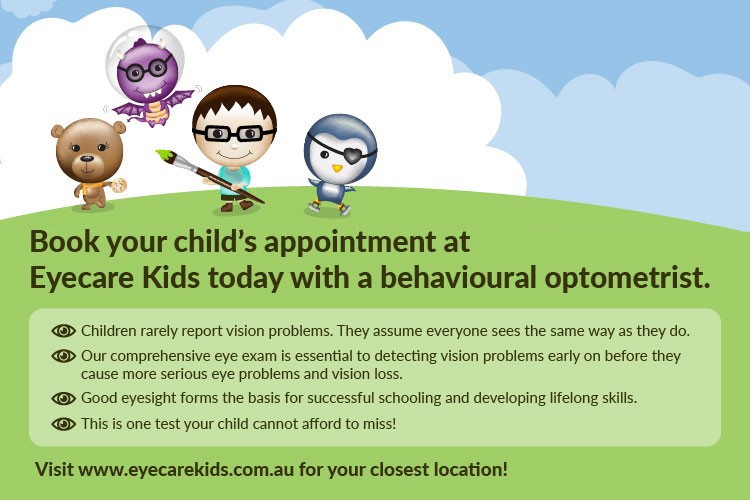Why does my child hold his books so close or have such a short working distance to his table?
Close working distance can occur for a number of different reasons. Children with strong postural reflexes and low muscle tone can struggle to maintain an upright posture when sitting at a table. Uncorrected prescriptions (such as myopia, hyperopia), binocular dysfunction (convergence excess, accommodative excess) would create a tendency to hold material closer as the print would appear larger and hence ‘easier’ to see. This would be only a temporary measure as visual fatigue would set in faster due to the greater visual demand to maintain accommodative-convergence at that close distance. Children who may have an attention problem, may adopt a close working distance to shut down their peripheral vision which may help them focus (or centre themselves) better at near work.
Why does my child blink so much?
Excessive blinking can occur for various reasons. If a child has very dry eyes for example, blinking regularly helps to re-wet the front surface of the eye, and relieve some of the irritation. If the eyes are not working well as a team, the child may briefly experience double vision, and may resort to blinking as a way to get the eyes to work together again. Blinking may be the only mechanism they have to temporarily regain fusion and appreciate a single image. Similarly, if a child’s focusing ability is reduced, near blur may be an issue. This blur may occur with fatigue. Blinking may be your child’s way of resting their eyes and trying to regain a clear image.
Why does my child have poor handwriting?
Handwriting is more than a fine motor skill as it requires visual analysis and spatial analysis skills for efficiency. A child with poorly developed concept of their own space will have difficulty in setting out a page and hence have uneven handwriting with different spacing between the lines and words. Capital and lower case letters may not be appropriately sized in comparison to each other. Further indications that a visual spatial problem may be present is the child’s working posture whilst writing – they may rotate their bodies to avoid crossing their midline and/or rotate the paper they are writing on and end up writing up and down rather than sideways. Visual analysis skills such as visual digit span and visual memory are also necessary when copying letters/words.
Why does my child have difficulty with reading and spelling?
There are a number of mechanisms in play when a child is asked to read. Having a high visual standard is essential in mastering this task. The components of a child’s vision needed for effective reading include:
- Do they need glasses to see clearly?
- Good tracking ability when reading
- Eyes that work together
- Efficient focusing skills
If any of the above components are compromised, reading becomes an issue. They may experience blurred, unsteady or double images that make fixing and following virtually impossible. If you find your child is avoiding reading, or is on a low level of reading for their age, it is worth considering vision as the potential key to unlocking the reason behind the issue.
Optometrists Association Australia recommends that children have a full eye examination with an optometrist before starting school and at least every two years thereafter. Eye examinations usually attract a Medicare rebate and no referral is required. Vision therapy may attract health insurance benefits.

